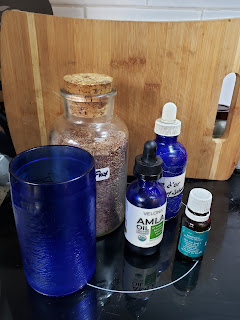Maker Monday - Natto
Fermented foods come in many forms, and can offer great support for gut health.
Asian countries have many processes for fermenting beans - in Japan, one of these is Natto. I was intrigued to discover rather than purchasing inoculant, you can use a handful of mint stalks! (The first Natto was likely made using rice stalks.)
On his ikigai diet youtube channel, health enthsiast Sachiaki Takamiya offers videos with tips and recipes for making this superfood at home, plus info on healthy lifestyle. Protein levels in fermented beans are often double that in the same beans when simple cooked.
I enjoyed this video, highlighting 4 generations of a family (4-88) evoking good health and daily natto, plus the process and health benefits.
In the Shiga prefecture, it is common for elders to eat soybean natto several times a week, along with seaweed, vegetables and other whole and fermented food. As in the Blue Zone Okinawa, many continue to be active, and live into their 80s/90s +.
Prior to 1945, there were over 4000 varieties of soy beans grown throughout China, Japan and Korea! These vary in color, taste, size and uses. Around 40 of those many varieties were 'approved' by the USDA for commercial use and distributed to farmers, and layer genetic modification cane into play.
By 1950, there was a surplus of these US grown beans - so many were exported to Japan and other countries. In the 70s, Japan turned to Brazil for its soy imports.
By 2014, more than 90% of the soy grown across N and S America was Genetically Modified and made chemical (herbicide) 'ready'. Around 70% of this GM soy is fed to poultry and pigs, with some is fed to cattle, sheep and farmed fish! Organically grown soy is available, and some is grown in Oregon.
The older Landrace soy varieties have become increasingly rare. In Okinawa, Kenichi Kariki tracked seed of their traditional O-Higu variety, which had been saved and stored by a professor decades ago.
Kenichi San now has enough seed to plant and to share with neighbors, in an attempt to reestablish this unique strain. ('Eating to Extinction,' 2021 - by BBC food journalist Dan Saladino)
For this batch, I used sustainably grown NW pinto beans, put them to soak overnight, then harvested mint and stripped the leaves. After cooking the beans ~ an hour, I used the mint stalks to inoculate them with bacillilus subtilis and Natto kin (Natokinase), and will save the leaves for tea. I used my Crockpot to ferment the beans for 24 hours, then cooled in the fridge.
Natto, along with Miso and tofu, is on the list of fermented foods suggested by a local holistic doctor. You may need to try a small amount several times to develop a taste for it. Mixing with some rice, prepared mustard and soy or coconut aminos is often suggested. Seaweed and kim chi fans might add those.
Here's a post on using black beans to make natto. And this Finnish author used dried broad beans! These are currently in season, so I picked up some fresh, locally grown favas for my next batch.






Comments
Post a Comment